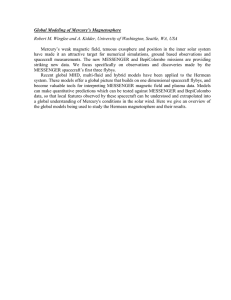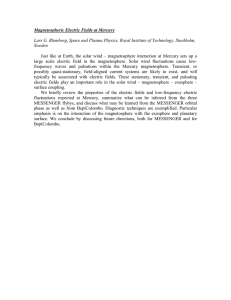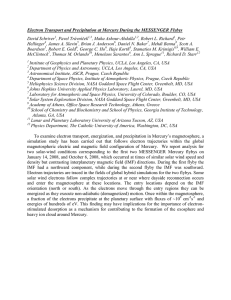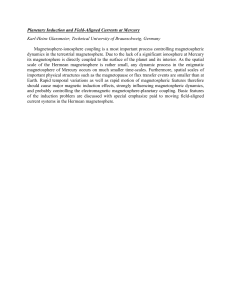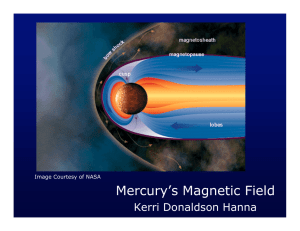MESSENGER’s view of Mercury's magnetosphere and comparison with that of Earth
advertisement
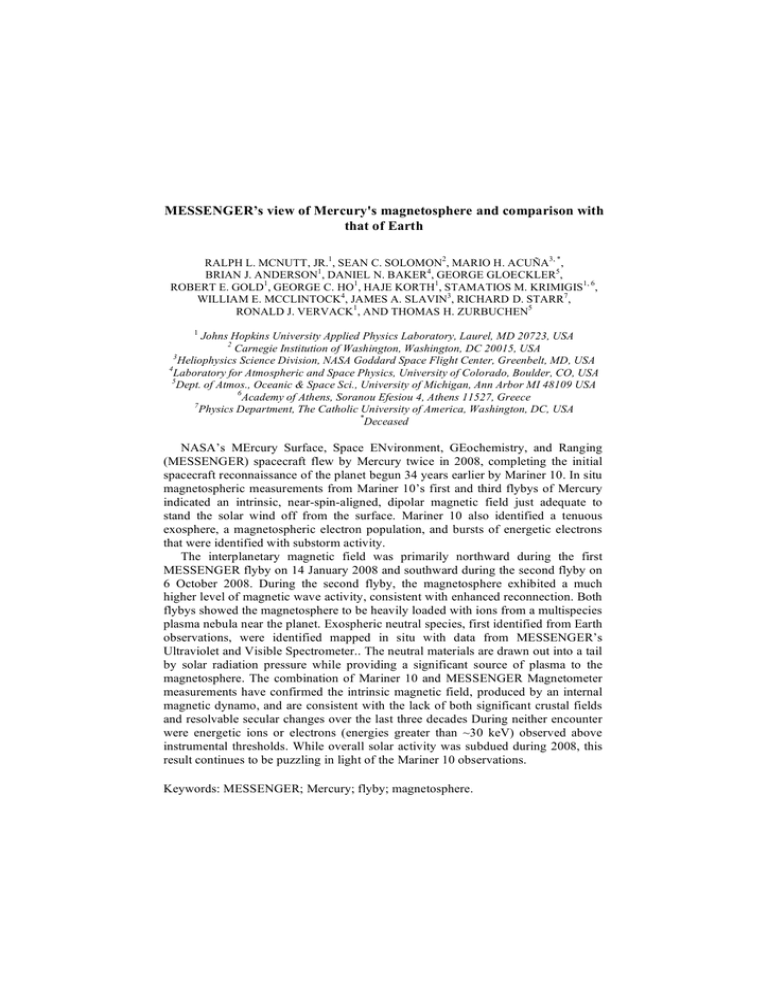
MESSENGER’s view of Mercury's magnetosphere and comparison with that of Earth RALPH L. MCNUTT, JR.1, SEAN C. SOLOMON2, MARIO H. ACUÑA3, *, BRIAN J. ANDERSON1, DANIEL N. BAKER4, GEORGE GLOECKLER5, ROBERT E. GOLD1, GEORGE C. HO1, HAJE KORTH1, STAMATIOS M. KRIMIGIS1, 6, WILLIAM E. MCCLINTOCK4, JAMES A. SLAVIN3, RICHARD D. STARR7, RONALD J. VERVACK1, AND THOMAS H. ZURBUCHEN5 1 Johns Hopkins University Applied Physics Laboratory, Laurel, MD 20723, USA 2 Carnegie Institution of Washington, Washington, DC 20015, USA 3 Heliophysics Science Division, NASA Goddard Space Flight Center, Greenbelt, MD, USA 4 Laboratory for Atmospheric and Space Physics, University of Colorado, Boulder, CO, USA 5 Dept. of Atmos., Oceanic & Space Sci., University of Michigan, Ann Arbor MI 48109 USA 6 Academy of Athens, Soranou Efesiou 4, Athens 11527, Greece 7 Physics Department, The Catholic University of America, Washington, DC, USA * Deceased NASA’s MErcury Surface, Space ENvironment, GEochemistry, and Ranging (MESSENGER) spacecraft flew by Mercury twice in 2008, completing the initial spacecraft reconnaissance of the planet begun 34 years earlier by Mariner 10. In situ magnetospheric measurements from Mariner 10’s first and third flybys of Mercury indicated an intrinsic, near-spin-aligned, dipolar magnetic field just adequate to stand the solar wind off from the surface. Mariner 10 also identified a tenuous exosphere, a magnetospheric electron population, and bursts of energetic electrons that were identified with substorm activity. The interplanetary magnetic field was primarily northward during the first MESSENGER flyby on 14 January 2008 and southward during the second flyby on 6 October 2008. During the second flyby, the magnetosphere exhibited a much higher level of magnetic wave activity, consistent with enhanced reconnection. Both flybys showed the magnetosphere to be heavily loaded with ions from a multispecies plasma nebula near the planet. Exospheric neutral species, first identified from Earth observations, were identified mapped in situ with data from MESSENGER’s Ultraviolet and Visible Spectrometer.. The neutral materials are drawn out into a tail by solar radiation pressure while providing a significant source of plasma to the magnetosphere. The combination of Mariner 10 and MESSENGER Magnetometer measurements have confirmed the intrinsic magnetic field, produced by an internal magnetic dynamo, and are consistent with the lack of both significant crustal fields and resolvable secular changes over the last three decades During neither encounter were energetic ions or electrons (energies greater than ~30 keV) observed above instrumental thresholds. While overall solar activity was subdued during 2008, this result continues to be puzzling in light of the Mariner 10 observations. Keywords: MESSENGER; Mercury; flyby; magnetosphere.
